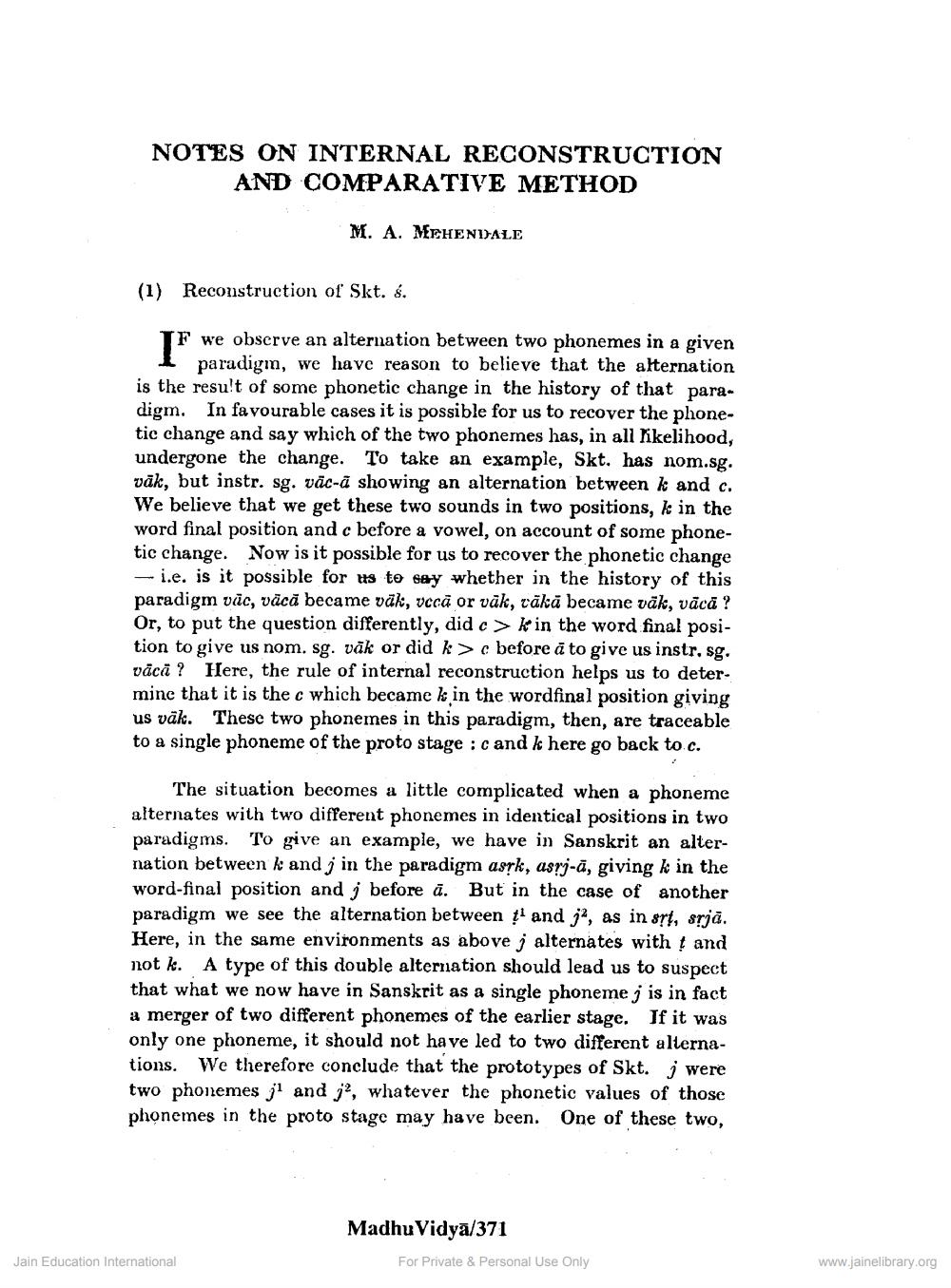________________
NOTES ON INTERNAL RECONSTRUCTION
AND COMPARATIVE METHOD
M. A. MEHENDALE
(1) Reconstruction of Skt. s.
TF we observe an alternation between two phonemes in a given
1 paradigm, we have reason to believe that the alternation is the result of some phonetic change in the history of that para. digm. In favourable cases it is possible for us to recover the phonetic change and say which of the two phonemes has, in all Kikelihood, undergone the change. To take an example, Skt. has nom.sg. vāk, but instr. sg. vācă showing an alternation between k and c. We believe that we get these two sounds in two positions, k in the word final position and c before a vowel, on account of some phonetic change. Now is it possible for us to recover the phonetic change -- i.e. is it possible for us to say whether in the history of this paradigm vāc, vācă became vāk, vccă or vāk, tākā became vāk, vācā ? Or, to put the question differently, did c>k in the word final position to give us nom. sg. vāk or did k > c before ā to give us instr, sg. vācā ? Here, the rule of internal reconstruction helps us to determine that it is the c which became k in the wordfinal position giving us vāk. These two phonemes in this paradigm, then, are traceable to a single phoneme of the proto stage : cand k here go back to c.
The situation becomes a little complicated when a phoneme alternates with two different phonemes in identical positions in two paradigms. To give an example, we have in Sanskrit an alternation between k and j in the paradigm asrk, asrj-a, giving k in the word-final position and j before à. But in the case of another paradigm we see the alternation between t and ja, as in srt, srjā. Here, in the same environments as above j alternates with t and not k. A type of this double alternation should lead us to suspect that what we now have in Sanskrit as a single phoneme j is in fact a merger of two different phonemes of the earlier stage. If it was only one phoneme, it should not have led to two different alternations. We therefore conclude that the prototypes of Skt. j were two phonemes jl and j?, whatever the phonetic values of those phonemes in the proto stage may have been. One of these two,
Madhu Vidyā/371
Jain Education International
For Private & Personal Use Only
www.jainelibrary.org




